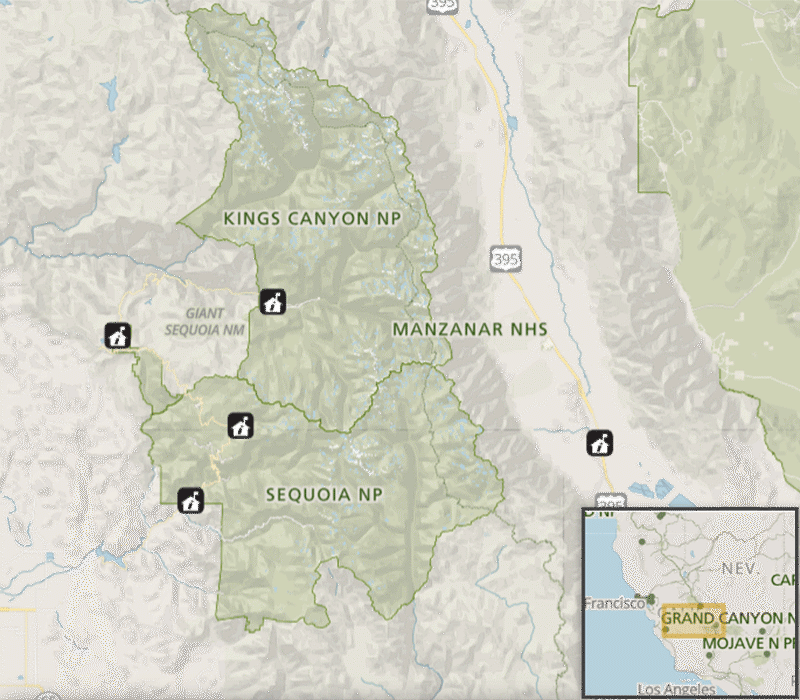
USGS Investigators: Thea Edwards
NPS Investigators: Erik Meyer
| 2020 | 2021 | 2022 |
|---|---|---|
| $100,000 | $100,000 | $100,000 |
NPS Park: Sequoia / Kings Canyon NP
USGS Center: Columbia Environmental Research Center
States: CA
Despite a legacy and mission of preservation, national parks remain susceptible to non-point source pollution from atmospherically deposited nutrients, pesticides, and metals. To study this issue, Sequoia and Kings Canyon National Parks (SEKI) and the University of California, Davis Agricultural GIS Laboratory recently created a web-based mapping tool that predicts pesticide deposition into California national parks using California’s Pesticide Use Reports database.
From this analysis, the Mapper identified copper-based pesticides among the top three high-impact pollutants that are likely to enter SEKI’s oligotrophic mountain lakes by atmospheric deposition. In addition to copper, agricultural activities are likely the main source of volatized nitrogen in the atmosphere over SEKI.
SEKI management needs to verify the Mapper predictions of copper deposition to SEKI lakes, determine if copper and nitrogen synergize to drive algal blooms in the lakes, and establish if copper is bioaccumulating in the food web and impacting fish health. This project will collect information on copper loading and the potential for nitrate and copper to synergistically promote algal blooms in a snowmelt-driven alpine aquatic ecosystem.
